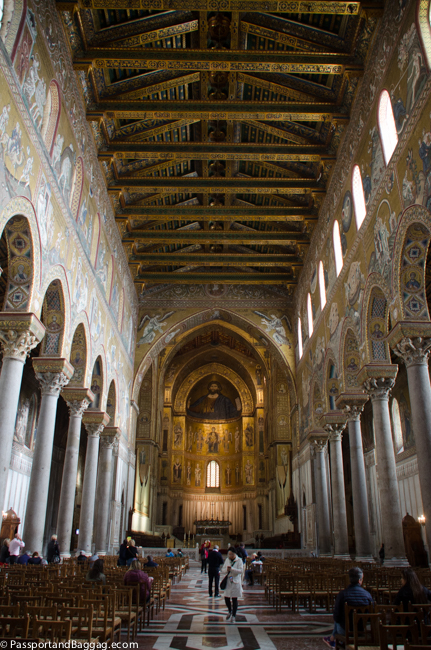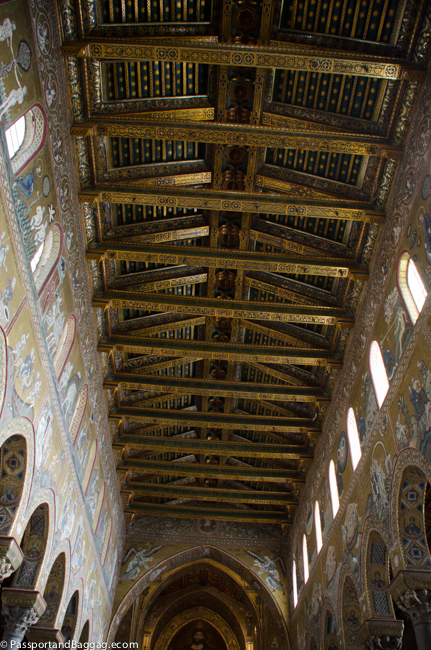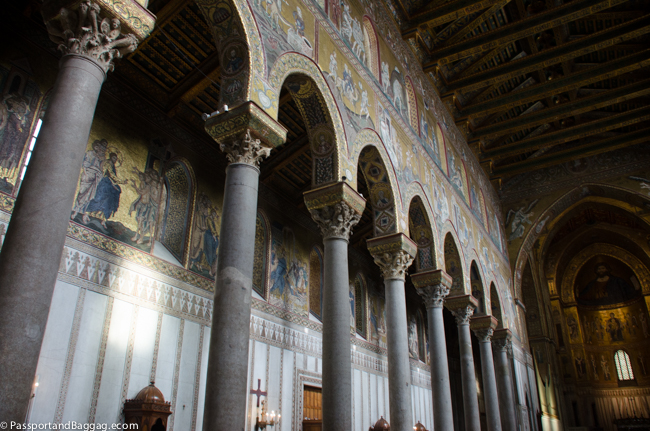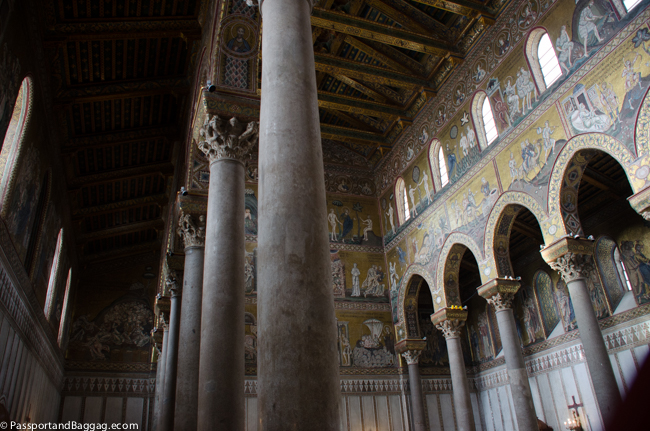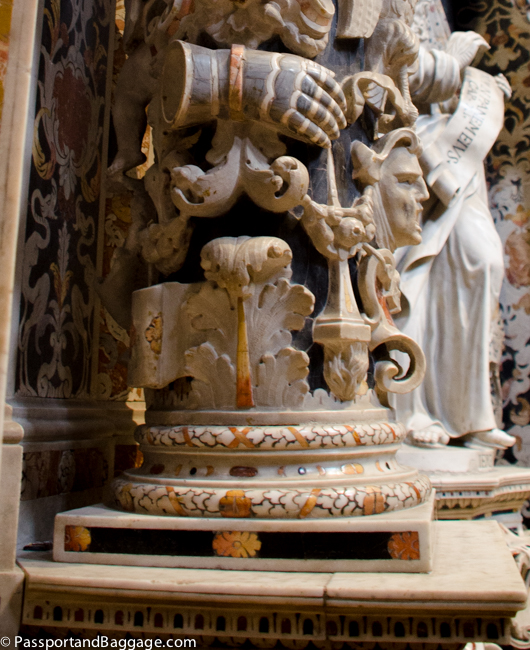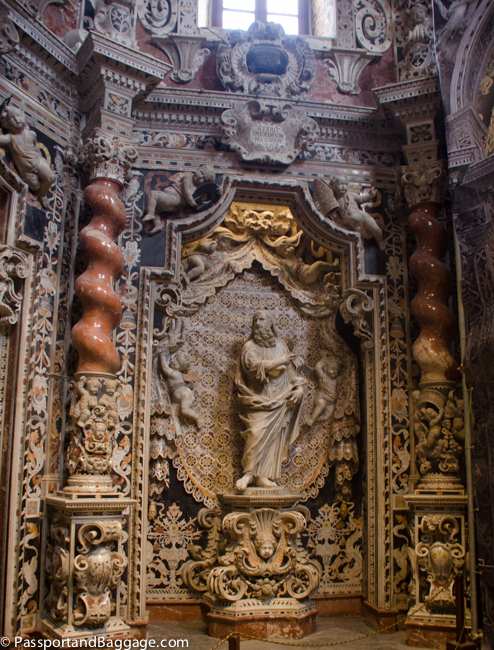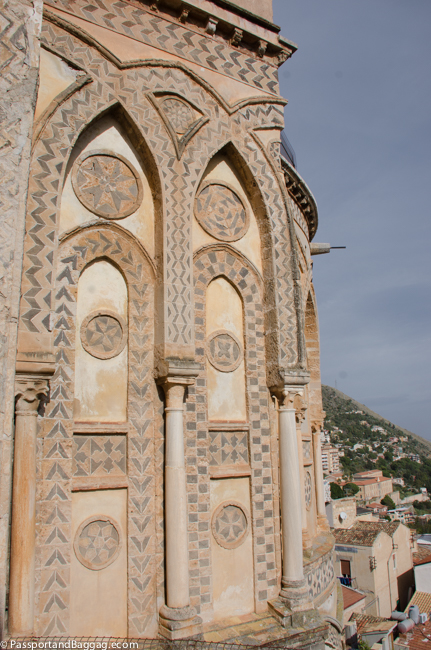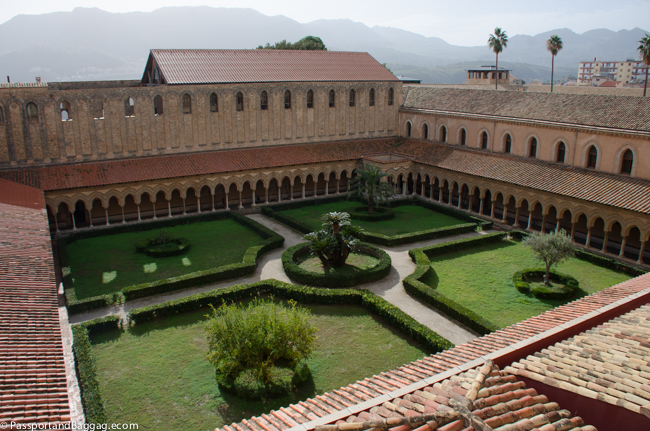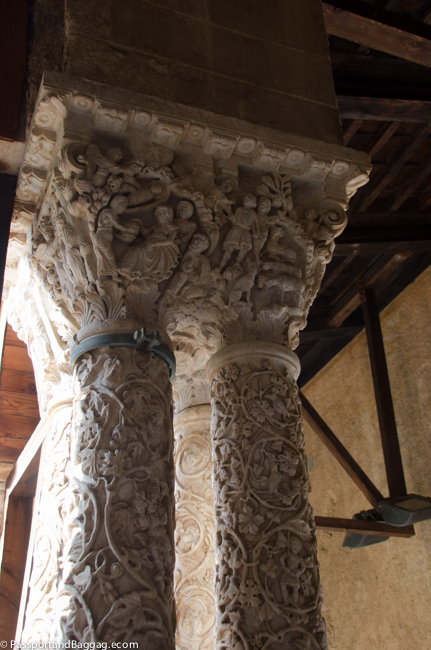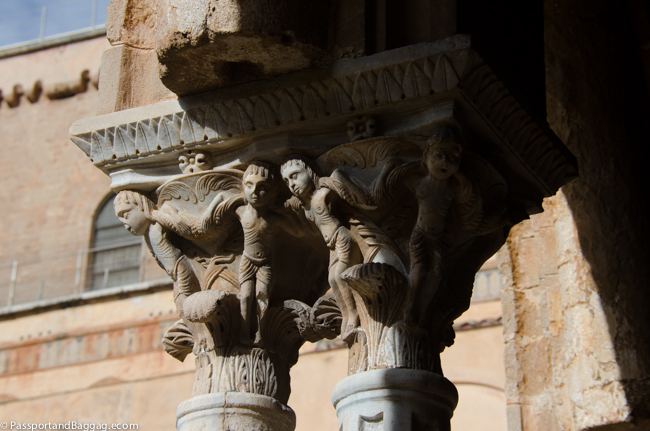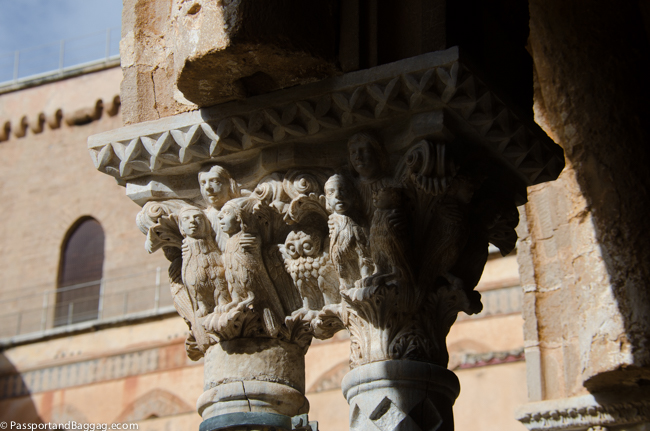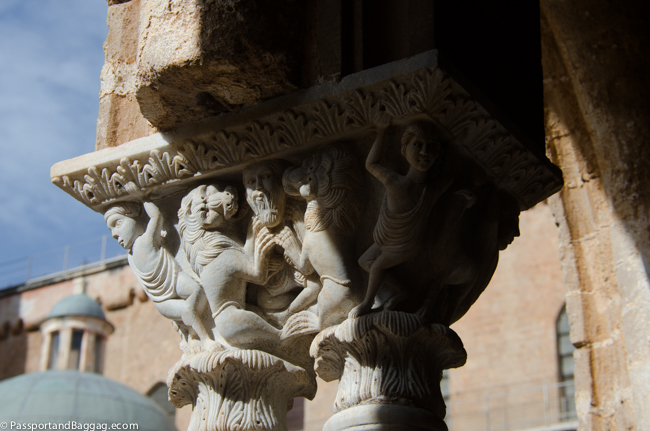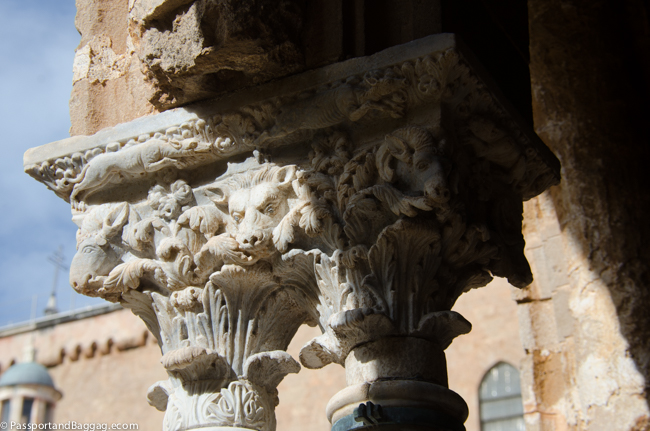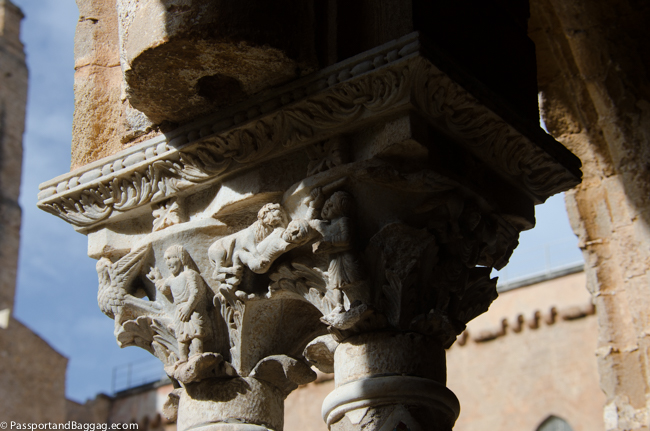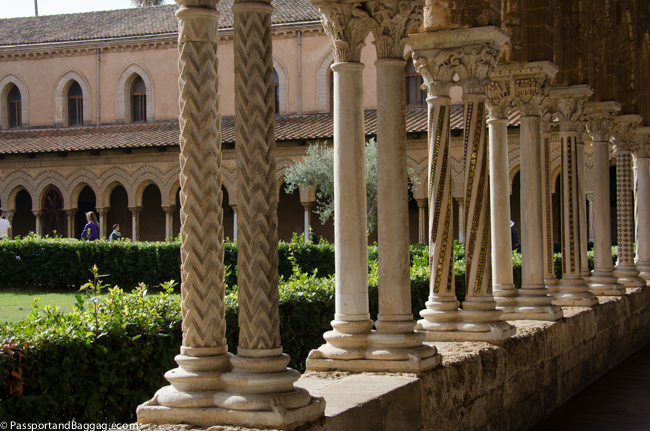November 16, 2019
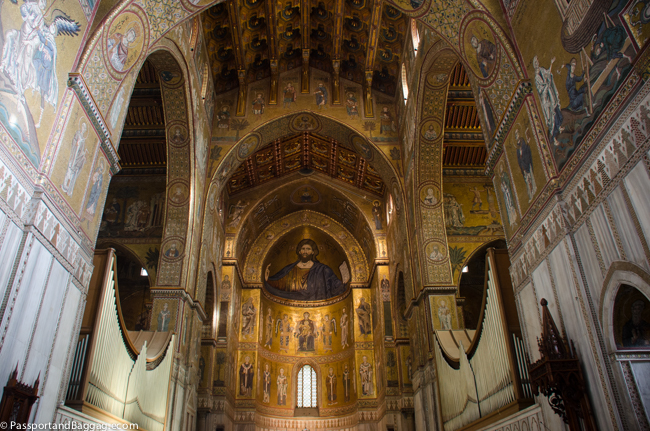
After the occupation of Palermo by the Arabs in 831 the Arabs transformed the Cathedral of Palermo into a mosque and banished the Bishop of Palermo.
The Bishop was forced to move his seat outside the capital so he chose a small village in the hills overlooking Palermo, today Monreale.
Around 250 years later, in 1072, the Normans drove the Arabs from Sicily, establishing Palermo as their capital and re-consecrating the cathedral.
In 1174, in an act of piety, thanksgiving, and commemoration of the exiled Bishop of Palermo, King William II ordered the construction of a new church in Monreale, dedicated to the Virgin Mary. Upon its completion in 1182, Pope Lucius III elevated the church to the status of Metropolitan Cathedral.
The cathedral of Monreale is one of the greatest extant examples of Norman architecture.
A geometrical pattern of inlaid marble supports two lines of granite Corinthian columns that support the wooden ceilings above the nave. Lancet arches span from column to column drawing the eye to the window-punctured clerestory with its over 21,000 square meters of gold mosaics representing biblical scenes, saints, kings, and angels.
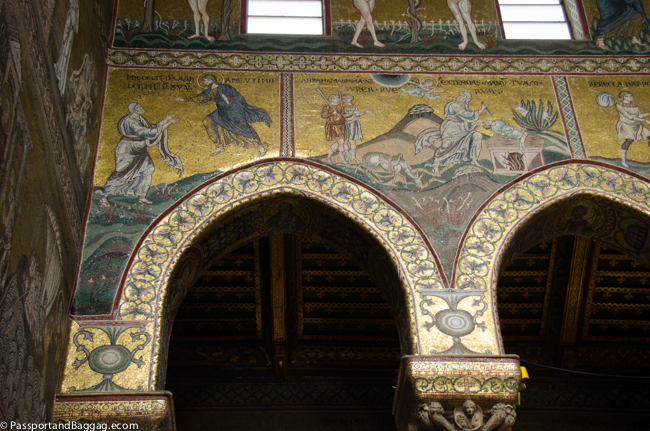
The panel to the far left is the Lord commanding Abraham to sacrifice Isaac. The next panel is the Sacrifice of Isaac.
The Chapel of the Holy Crucifix is a small Baroque treasure chest off of a smaller nave on the left of the church.
The chapel was built by order of Giovanni Roano, the Spanish archbishop who led the dioceses of Monreale from 1673 to 1703.
Roano entrusted Giovanni di Monreale with designing the Chapel, which features decorations meant to resemble a symbolic symphony dedicated to the sacrifice of Jesus.
It is a wonder in the craft of marble.
The cloisters were built in 1200 as part of the Cathedral abbey, they comprise 108 pairs of marble columns, a covered arcade of Arabic arches and a central quad. Every other pair of columns is decorated with unique mosaic patterns (no two are the same) and each is topped by a floral capital. It is an absolutely sublime space to inhabit.
An example of the many different capitals around the cloister:
The fountain within the cloisters simply adds to its perfection.

Just some of the unique columns within the cloisters
*
In 2015, Monreale was granted status as a UNESCO World Heritage Site.

